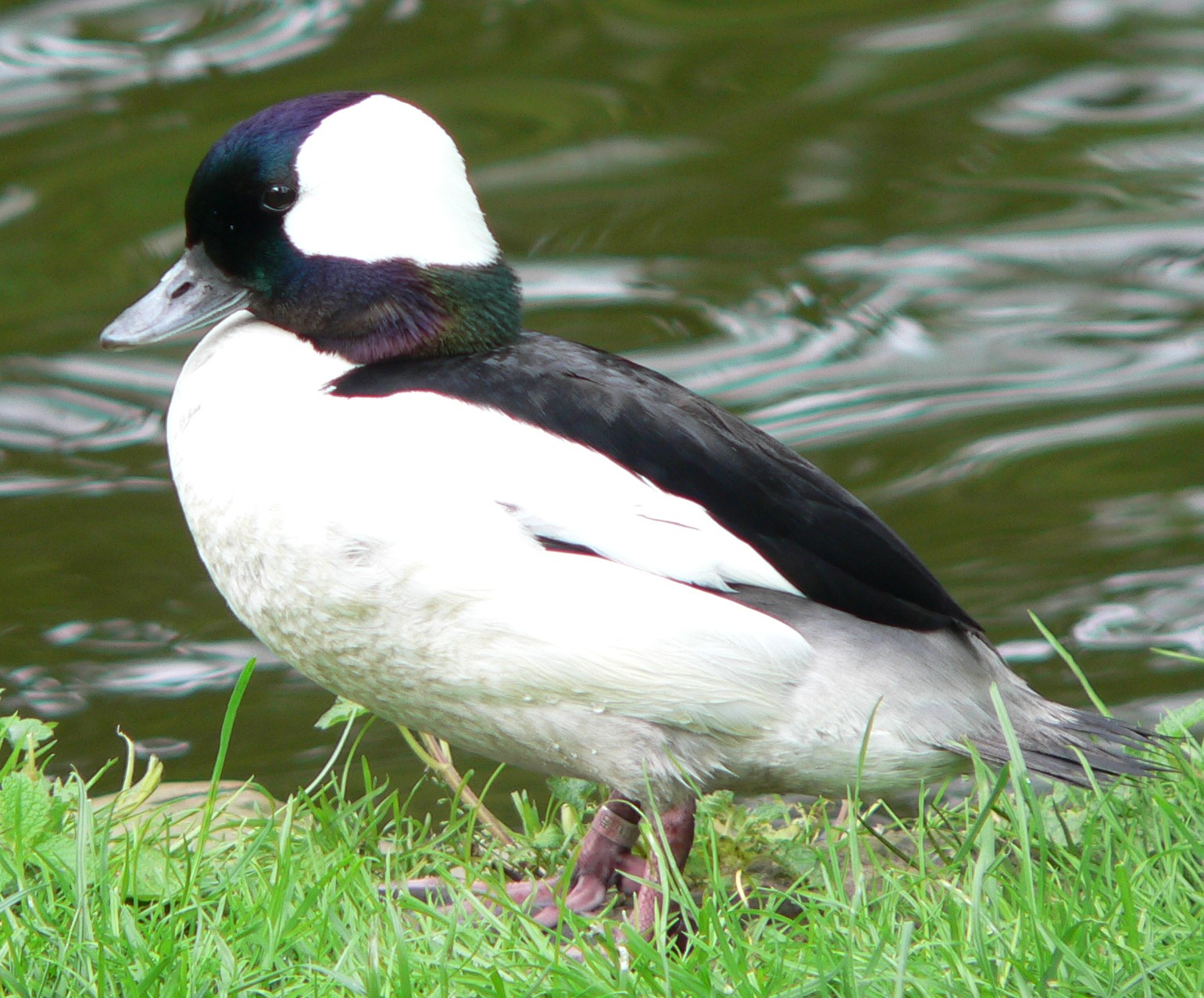
Bufflehead(Bucephala albeola)
Phylum —chordata
Class — aves
Order — anseriformes
Family — anatidae
Genus –bucephala
Appearance
The bufflehead ranges from 32–40 cm (13–16 in) long and weighs 270–550 g (9.5–19.4 oz), with the drakes larger than the females. The bufflehead has a wingspan of 21.6 in (55 cm).
Adult males are striking black and white, with iridescent green and purple heads and a large white patch behind the eye. Females are grey-toned with a smaller white patch behind the eye and a light underside.
Habitat
They are migratory birds and most of them winter in protected coastal waters, or open inland waters, on the east and west coasts of North America and the southern United States. The bufflehead is an extremely rare vagrant to western Europe. Their breeding habitat is wooded lakes and ponds in Alaska and Canada, almost entirely included in the boreal forest or taiga habitat.
Behavior
Buffleheads spend their time preening, swimming, diving, perching, flying and foraging. They seldom walk on land. They are moderately gregarious outside of the breeding season, often found in flocks to 5 to 10 and rarely in flocks of more than 50. Their principal daytime activity is foraging, comprising roughly 60 percent of their time. In the winter, buffleheads continue to forage through the night. They also migrate at night like many other ducks.
Males sometimes exhibit aggressive behavior and displays.
Diet
Buffleheads primarily eat aquatic invertebrates and some seeds. Their freshwater diet consists of mostly insects like damselfly larvae, dragonfly larvae, midge larvae, water boatmen, mayfly larvae, caddisfly larvae and other insects. In saltwater habitats, a variety of arthropods and mollusks make up their diet.
Reproduction
Buffleheads are monogamous, and the females return to the same breeding site, year after year. They nest in cavities in trees, primarily aspens or poplars.
Average clutch size is nine (range six to 11), and eggs average 50.5 by 36.3 mm (1.99 by 1.43 in). Incubation averages 30 days, and nest success is high compared to ground-nesting species like the teal. A day after the last duckling hatches, the brood leaps from the nest cavity. The young fledge at 50–55 days of age.
Buffleheads live 2.5 years on average in the wild, though some have been known to live as long as 18 years.
In captivity
These birds need a deep pool, but the best option is a reservoir (pond).
Buffleheads eat plant food: algae and their roots, various rhizomes of submerged cereals and grains, as well as their seeds.
The diet of these birds should also include mollusks, snails, nymphs, earthworms and leeches. Protein-rich food is important for birds during the reproduction season. During feeding, adult females eat almost only organic food.
 Russian
Russian
 English
English
























